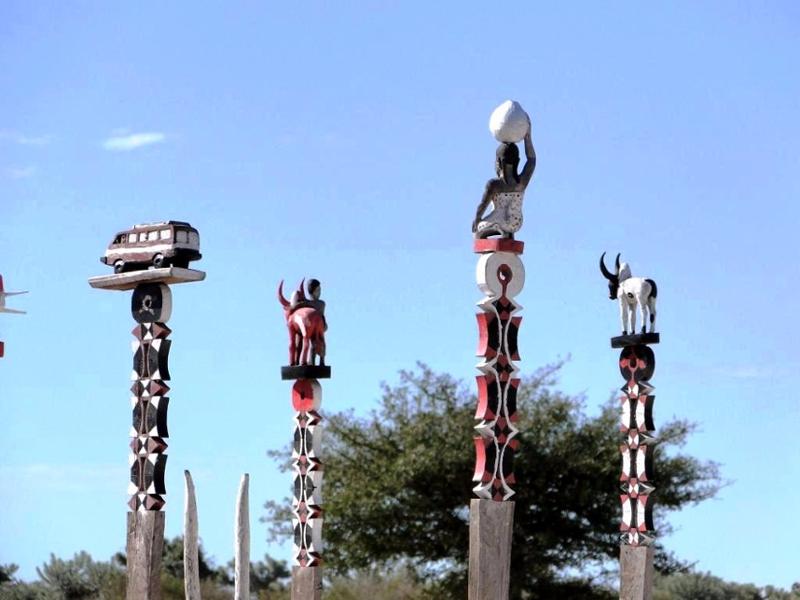
Aloalo: An essential component of Mahafaly culture
The aloalo are intricately carved wooden totems that adorn the tombs of the Mahafaly people in the southwest of Madagascar. These can be seen along RN10 during a journey through the far south of the island. Beyond their artistic appearance, they hold significant importance in local beliefs and culture.
An exceptional funerary art
The aloalo is a form of funerary art, but one that not everyone can create. The crafting of these carved and painted funeral poles is restricted to a select group of artisans who pass their skills down from father to son. Since one is not allowed to make their own totems, each family or tribe has its dedicated supplier. These artisans work far from the village and residential areas, often in the forest, using “nendoravy,” a rare and dense wood also used to make coffins.
The ritual object measures about 2 meters and is divided into two parts. The lower section features geometric patterns ending in a full moon design called “volamiratse.” The upper section consists of carvings of zebus, women, buses, and other elements representing the wealth of the deceased. The motifs and iconography are highly symbolic: a pair of birds symbolizes love and loyalty, figures of judges represent justice, warriors signify sovereignty and loyalty, and so on. All of these elements reflect the life and journey of the deceased.
The name Efiaimbelo (1925–2006), a renowned aloalo sculptor, became famous for breathing new life into this art form by introducing vibrant colors using acrylic and oil paints as well as contemporary elements. His works were first exhibited at the Perrotin Gallery in New York in 2018. Many other museums and galleries worldwide have displayed aloalo as cultural icons of Madagascar. However, according to Mahafaly culture, these ritual objects belong only in burial sites.

A part of Mahafaly culture
The aloalo symbolizes death and must remain far from the living. Tomb sites are generally off-limits except during burials or when herds stray into the area. Otherwise, strict rituals must be observed. The aloalo displayed along national roads were initially located in forests, but the construction of roads to ease travel led some Mahafaly people to see this as an opportunity to showcase their grandeur to the world. If you wish to see them during your trip to Madagascar, consider visiting places like the Ifotaka Forest, the Mahafaly region of Ilakaka, and Betioky.
Originally, these totems were reserved for kings and queens as symbols of nobility. Today, they are used by anyone wishing to display their wealth. The more aloalo a tomb has, the higher the status of the deceased. Other elements also signify wealth, such as zebu horns, whose quantity corresponds to the livestock owned by the deceased. All these must be executed and consumed during the funeral.
Even the shapes of the tombs are exceptional, ranging from a simple crypt to a palace or even a model of an airplane or ship. These tombs are considered the new homes of the deceased, where they will reside for eternity. Therefore, they must reflect the deceased's status, as they become ancestors, or razana, to whom the living pay homage. According to Malagasy belief, ancestors are intermediaries between God (Andriamanitra or Zanahary in coastal dialects) and the living
© Détours Madagascar - October 22, 2019
